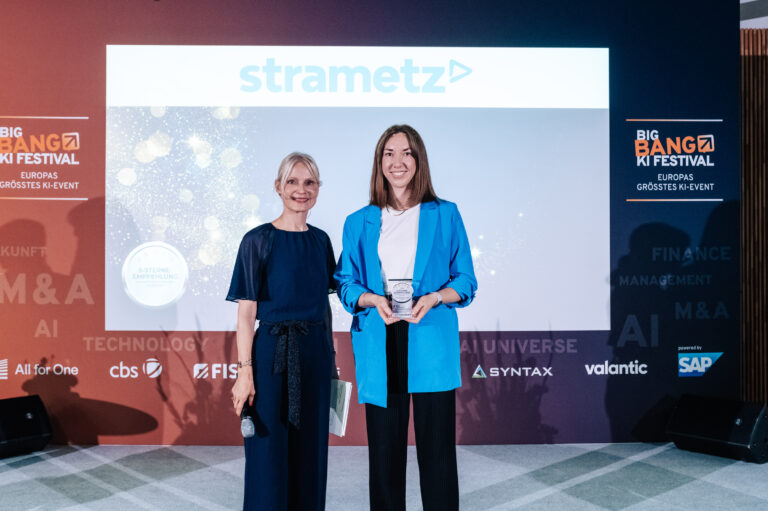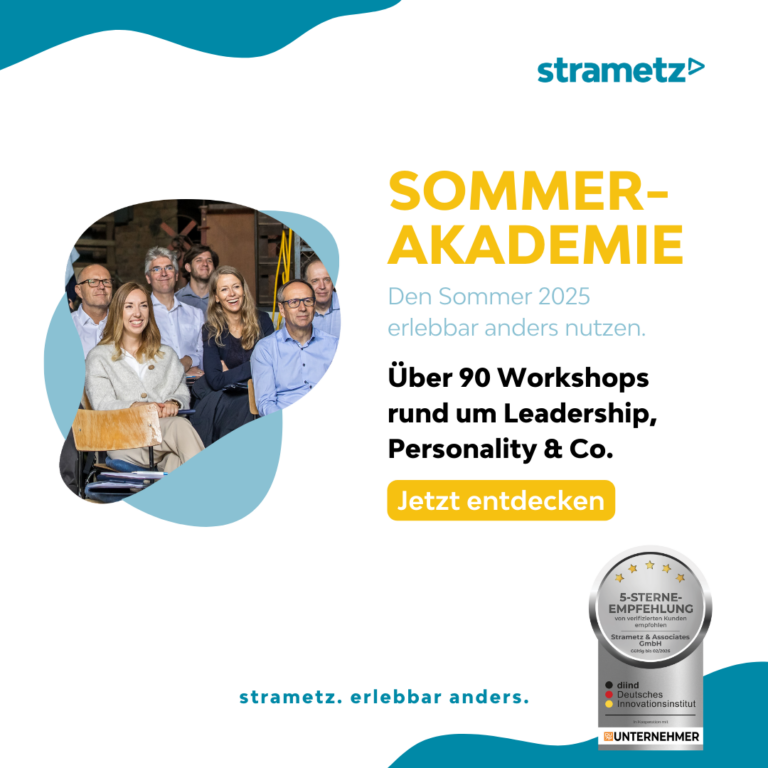With affinity profiles to better personnel decisions – an interview with the author Manuel Schuchna
Last year, the book “Innovative Potential and Competence Management” by Manuel Schuchna was published. It addresses a newly designed model for sound topic- and subject-specific personnel and aptitude diagnostics and provides the basis for personnel decisions based on affinity profiles.
We asked the author how he came up with the idea for this novel concept and why it has great significance for the field of diagnostics:
How did you come up with the idea for the book and the Affinity Profile® in particular?
Manuel Schuchna: “Initially, my goal was not to develop a model or write a book. For more than 20 years I have been involved in personnel development with a special focus on the topic of personnel diagnostics. My initial focus was on personality models, of which I tried many. A few could be applied very well. Other models quickly showed weaknesses in practical use. However, I never found a suitable answer to one of my questions: How do I find out whether a person is well suited for a technical or thematic activity or for a certain way of working?
There were and still are good personality models for the generic competencies, which I still like to use. But there was no suitable concept for the subject- and topic-specific potential assessment so far.
In order to be able to cover this facet of personnel diagnostics, I first created a checklist to record what the model I was looking for must be able to do. For years I looked in vain for a suitable concept and had to realize that there was no suitable model on the market. As a result, I myself began to develop solutions for such topic- and subject-specific personnel diagnostics. Then, three years ago, I gave up the search completely, finalized the model, and wrote the book.”
As an expert, where do you see the advantages of the affinity model and what is special about it?
Manuel Schuchna: “As already mentioned, I like to work with personality models. For example, it makes sense to use one when a company is looking to fill a sales representative position. It helps to find out whether or not the potential candidate has extroverted personality traits that are needed in sales. However, after that we don’t know whether the salesperson is more suited to selling food, financial services or technical products.
The affinity model, on the other hand, addresses this very issue and clarifies what activity a person is attracted to and what topics they are passionate about. A degree that may not yet exist or a missing certificate should not stop anyone from finding out their true affinities.”
Can you briefly introduce us to the core ideas of the affinity model?
Manuel Schuchna: “Affinities are divided into three different types in this model:
(1) Topic affinity
(2) Work phase affinity
(3) Complexity affinity
The outer circle of the diagram below describes the subject affinities. These are each geared to a specific object. In order to find out whether a person has more of an affinity for numbers or for the psyche of an individual, the following key question, among others, can be used: What does a person deal with well and gladly?
Another perspective is the question of how an activity works. This second affinity type is described by the work phases that suit a person well. In the affinity model, three work phases can be distinguished: Conceiving, Enabling, Doing. In the Thinking phase, the focus is on creativity, inventiveness and concept development. The Machen work phase is primarily about visible results. The enabling work phase, which builds a bridge between the other two work phases, takes on a key function. The focus here is on preparing and enabling.
The third affinity type refers to the degree of complexity of the activity fields. This dimension distinguishes whether a person prefers simple, complicated, or complex task types.
The combination of the individual elements results in a variety of possible outcomes. The Affinity Profile® is highly individual, just like the fingerprint of a person. Finally, this fingerprint can be used to work out for each person which activities and tasks suit the person and for which a positive performance prognosis can be given.”
When is the affinity model helpful and what can it be used for?
Manuel Schuchna: “There are diverse areas of application, ranging from career orientation, talent scouting and team development to the management of potentials and competencies in Industry 4.0. The affinity model can even determine profiles of professions that do not yet exist.
All use cases involve two core properties of the affinity model: it is a structuring aid and a visualization tool. As a structuring aid, it serves on the employer side to coordinate competence requirements for tasks and jobs. It is also the basis for assessing the motivation and potential of individuals, teams or the entire workforce.
For a Scrum team of an advertising agency, for example, an Affinity Profile® of all team members can be created to see whether all the required affinities for the team’s tasks are present or where there is a need for additions.
The target group of the affinity profile includes entrepreneurs, executives and HR professionals as well as private individuals. In the area of human resources, there are two dimensions that can be distinguished. One dimension covers the area of job placement, the other addresses people who want to provide guidance to others. These can be, for example, teachers at school or people from the fields of personnel development and coaching. For the individual, the Affinity Profile® is of interest if someone wants to know what affinities one has and to which job descriptions and task fields these would fit.”
Outlook
The affinity model can be used in a variety of ways. Assuming the model would be used during or even before training and studies, and everyone would know and be able to interpret their personal affinity fingerprint. How many training and study dropouts could be avoided? How much time would be freed up in the professional context if it no longer had to be used to fix bad decisions?
Strametz [&] Associates, with its licensed consultants, is the first consulting firm to date to offer this process to individuals, teams and organizations. We would like to thank Mr. Schuchna for the interview, the trust he has placed in us and we are looking forward to further cooperation in affinity consulting.
About the author
Manuel Schuchna studied architecture and theology and thus combines in his range of activities the economic-technical concerns with the human and value-oriented aspects. Personnel diagnostics is one of the focal points of his work. This is characterized by his many years of experience with a wide variety of personnel issues in the non-profit sector and in industry.
For further interesting insights please have a look at our news section










